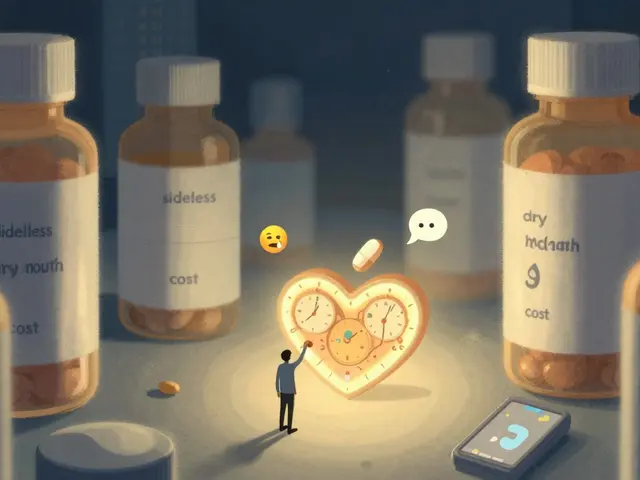Dandruff: what it is and what actually helps
Up to half of adults deal with dandruff at some point. Annoying, visible flakes are the common sign, but the cause can be different for each person. Before spending money on every product you see, learn the simple steps that work most of the time.
Quick way to tell what's going on
If your scalp is oily with yellowish flakes and redness, that points to seborrheic dermatitis — a common inflammatory condition. Small, dry white flakes often mean dry scalp. Thick, silver scales that won’t budge might be scalp psoriasis and need a different approach. Knowing the pattern helps you pick the right treatment.
How to treat dandruff at home
Start with a medicated shampoo. Choose one active ingredient and use as directed, usually 2–3 times a week until things calm down. Key options: ketoconazole (antifungal), zinc pyrithione (reduces yeast and oil), selenium sulfide (slows flake formation), coal tar (slows skin turnover), and salicylic acid (helps remove scales). If one shampoo works for a while, rotate between two types weekly to prevent resistance and rebound.
How to use it: wet hair, lather the medicated shampoo into your scalp, leave it on for 3–5 minutes (check label), then rinse. Don’t skip the waiting time — leaving it on briefly often gives little benefit. If your hair is long or dry, avoid putting conditioner on the scalp; apply conditioner only to the ends.
Simple home moves help too: brush your scalp gently to lift flakes, avoid very hot water, and limit styling products that sit on the scalp. A short scalp massage with a lightweight oil (like jojoba) once a week can loosen scales—shampoo afterward. Tea tree oil can help some people but try a small test patch first; it can irritate sensitive skin.
Avoid over-washing or scrubbing hard. Too much aggression dries or irritates the scalp and makes flakes worse. If stress spikes your symptoms, add simple stress control like walks, sleep routines, or short breathing breaks—stress often makes symptoms flare.
When over-the-counter shampoos don’t work, your doctor may prescribe a stronger antifungal, a short course of topical steroid to control inflammation, or medicated lotions used between shampoos. For suspected psoriasis or severe inflammation, a dermatologist exam is worth it.
Watch for warning signs: bleeding, large painful patches, rapid hair loss, or spreading rash to the face. Those need medical attention. Otherwise, most dandruff is controllable with the right shampoo routine and a few lifestyle tweaks. Try one clear plan for 4–6 weeks and track what improves—small consistent steps usually win.
Minoxidil Topical and Dandruff: What You Need to Know
Minoxidil topical is a popular hair loss treatment, but did you know it might contribute to dandruff? This article explores the connection between minoxidil and dandruff, offering practical tips to manage flakiness while using the product. We'll dive into why dandruff happens, how to prevent it, and the role of proper scalp care. Whether you're a longtime user of minoxidil or just starting, understanding these dynamics can help keep both your hair and scalp healthy.




